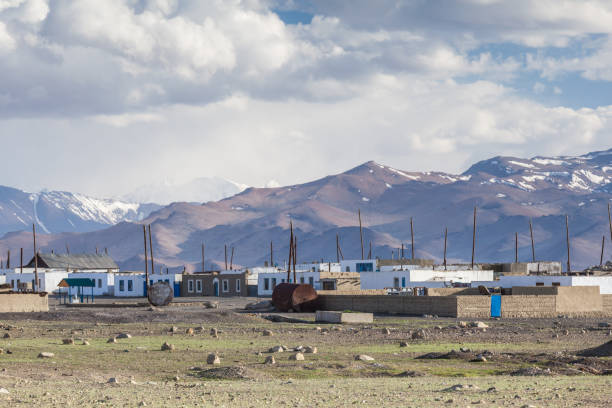While the entire world is looking towards green energy, so is Tajikistan, and it is stepping ahead to emerge as a force to reckon with in the field of renewable energy. The green energy policy of Tajikistan is to incorporate renewable energy sources as well as improved energy storage systems with the intent to create a secure and effective energy output. This report examines Tajikistan’s investment in renewable energy policy, energy storage technology, opportunities, and challenges. It contains key market trends, presents corresponding energy storage case studies, and discusses the scope of renewable energy in Tajikistan.
Renewable Energy Landscape in Tajikistan
Tajikistan is blessed with ample renewable resources such as hydro, solar, and wind. Tajikistan has issued policies in recent years to boost the generation of renewable energy as part of its general policy of reducing the consumption of fossil fuels and reducing carbon emission. They are:
- Incentives and Subsidies:Incentives and subsidies as a move to lure domestic and international investors.
- Regulatory Reforms:Simplified approval processes and investor-friendly policies to develop renewable energy projects.
- Strategic Partnerships:Foreign investors in the renewable energy sector will be partnered with to exchange technology and expertise.
All these programs are going to revolutionize Tajikistan’s energy sector, where integration of renewable energy sources will be the key feature of its green policy.
The Role of Energy Storage Technologies
Energy storage technologies are pivotal for balancing the intermittent nature of renewable energy. By storing excess energy generated during peak production times, these systems ensure a stable power supply during periods of low generation. Key aspects include:
Enhancing Grid Stability
- Load Shifting:Energy storage systems provide the potential to save and use surplus renewable energy when there is a high demand.
- Backup Power: Accurate energy storage is required to provide round-the-clock power supply, especially in inaccessible areas.
Enhancing Efficiency and Sustainability
- Optimized Energy Consumption:Advanced energy storage systems along with smart energy management systems boost overall energy efficiency.
- Environmental Benefits: Efficient devices store energy while keeping the consumption of fossil fuel-based backup minimal, hence the emission of carbon is restricted and the environment is pristine.
Case Studies on Tajikistan for Energy Storage
Several pilot projects and case studies had already demonstrated energy storage potential in Tajikistan:
Case Study 1: Introduction of Rural Microgrid
Employment of solar PV panels and energy storage in the form of battery for the provision of secure power supply by way of microgrid utilization was suggested in Tajikistan village. Not only was the scheme economical, but also provided enhanced energy autonomy to people. Best energy storage practice was maintained meticulously and checked periodically to ensure optimal performance and longer life.
Case Study 2: Commercial Deployment of Energy Storage
City entrepreneurs have begun integrating energy storage systems with renewable energy resources to regulate peak loads and balance supply. These efforts, made possible through local energy storage firms, are a testimony to innovation in energy efficiency and costs.
Challenges to Energy Storage System Integration
Prior to the rosy picture being mistaken for an all-smooth ride, below are a combination of issues that continue to confront energy storage system integration:
Technical and Operational Problems
Compatibility Problems: The new systems must be compatible with existing grid practices to be installed. Interoperability of the various energy storage technologies with existing power grids may be a problem.
- Maintenance Requirements:Periodic maintenance keeps the efficiency of the energy storage in good condition. System degradation and loss of efficiency may be due to improper maintenance.
- Environmental Flexibility:The storage devices need to be designed such that they are capable of functioning in different environmental conditions, i.e., humidity and temperature.
Market Dynamics and Policy Challenges
- Investment Risks:The government’s policies are conducive, but lack of confidence about the market dynamics might discourage would-be investors.
- Limited Local Know-How:Sophisticated know-how needed to balance high-tech storage devices continues to act as a bottleneck.
- Policy Enforcement:Effective and timely enforcement of policies on renewable energy must be performed to create the desired market impact.
Renewable Energy Market Participants and Future Prospects
The renewable energy market in Tajikistan is experiencing active participation by local as well as international market players. The players are shaping energy storage technology innovation and setting market directions through investments and strategic partnerships.
Key Market Players
- Local Businesses: Local developers and suppliers are now monitoring energy storage solutions in terms of the country’s unique energy demands.
- Foreign Investors: Foreign corporations are attracted to the country’s renewable energy opportunities and policies conducive to technology-transfer-and-growth.
- Research Centers: Interdisciplinary research with academia propels the next generation of energy storage devices.
Prospects for Renewable Energy in the Future
The future of renewable energy in Tajikistan is bright. Unshakeable government backing, combined with technological developments in the energy storage device sector, will lead to dazzling growth. Increasing energy efficiency, cost reduction, and strengthening market fundamentals will give the blue print for a stable, secure energy future. Microgrid integration of energy storage technology also holds much promise because it can balance energy access to rural communities and enhance overall grid reliability.

